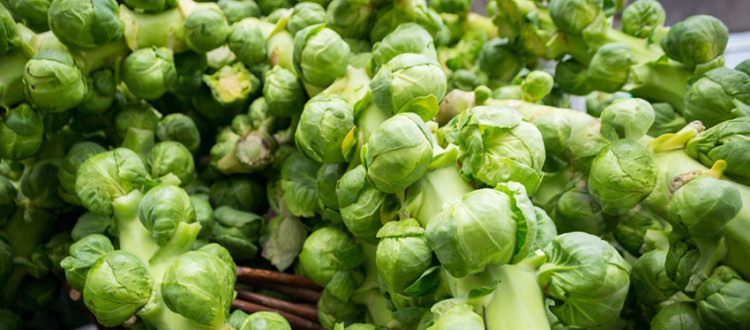Brussels Sprouts
Brussels sprouts (Brassica oleracea) are related to cabbage and produces small, spherical, edible buds that are between one to two inches in diameter, resembling miniature cabbage heads. Brussels sprouts enjoy cool weather and reach their flavor peak after a light frost in the fall visit this site right here. Many Brussels sprouts aficionados prefer to wait until fall to harvest the firm little orbs.
Brussels sprouts can trace their history back to 13th century Europe, (Belgium) where it was cultivated in its current form. French settlers are credited with bringing Brussels sprouts to North America, with commercial cultivation on the central coast of California beginning in the 1940s.
Brussels sprouts are excellent sources for vitamins C and K, and to a lesser extent B6 and certain trace minerals, proteins and carbohydrates. As with other members of the brassica family such as broccoli and cabbage, Brussels sprouts contain significant amounts of sulforaphane, a phytochemical favorably associated with anticancer properties.
How to Plant
Brussels sprouts get big, so it is best to plant them 24 to 36 inches apart, and if planting in rows, allow ample room between rows. Full sunlight, (at least 6 hours per day) is required. The central stalk will be thick and sturdy so no supports are needed.
Plant in loamy, well draining, nitrogen rich soil that is somewhat pH neutral, around 6.8 to 7.0. Brussels sprouts also require boron. Without it they will develop hollow stalks and small buds. Use a very small amount, (1 tablespoon dissolved in 5 gallons of water) if this condition develops.
Water thoroughly when planting, and do not allow the plant to dry out between watering to guard against small and poorly developed buds. Mulching after the plant has been established is an efficient and effective way to hold moisture in as well as protect against weeds.
Fertilizing
Most vegetables like a good all-purpose fertilizer after it is established, and a nitrogen rich input such as fish emulsion when transplanting.
Pests
Insects enjoy munching on Brussels sprouts almost as much as people. Be on the lookout for cabbageworm, cabbage maggots, cabbage white butterflies, thrips, and webworms.
The cabbageworm is easily visible and can be removed with your fingers. Cabbage maggots are found in the soil, feeding on roots. If your plants are wilting and showing yellow leaves, check the soil for these thick, short white worms. Prevention is the best way to treat for these maggots. Lay out a weed cover before planting. If the problem persists, eggs were possibly laid before planting. Avoid planting cole crops, (which Brussels sprouts are as well as broccoli and cabbage) in the same spot each year.
To alleviate a fly infestation, lay a sticky flytrap on the ground near the stalk. To treat other types of insects, use an insecticidal soap, and always follow directions on the product you’re using.
Harvesting
Look for round, firm buds that are one to two inches across. Buds initially form at the bottom and more emerge as the plant continues to grow. Cut buds off from the ground up using a sharp knife or twist them with your fingers until they separate from the stalk. The plant will tolerate light frosts but a hard freeze stops them from growing. If a hard freeze is anticipated where your garden is, try clipping off the top of the plant to force more bud growth in the days leading up to the onset of freezing weather.
Brussels sprouts can be stored in the refrigerator for up to five days. Do not wash before storing, only before preparing them to cook.
Spent stalks should be removed from the garden and placed in the compost pile, away from the garden. Chopping the stalks up first will speed their decomposition.
Recommendations for Use:
- Brussels sprouts can be roasted, steamed, sautéed and pickled.
- Boiling the buds results in decreased nutrient level.
- Avoid overcooking as it brings out the odor of sulfur.

